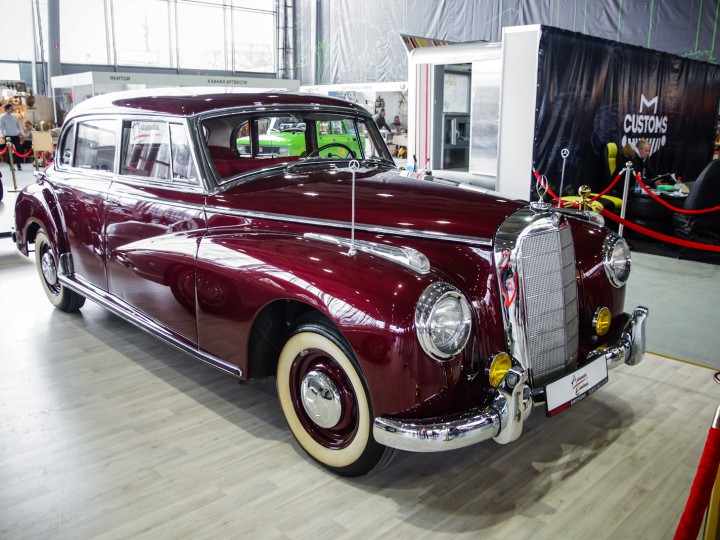1951 Mercedes-Benz T300
Designed to give reliable service under prolonged hard use, the engine featured deep water jackets, thermostatically controlled oil cooling, copper-lead bearings and a hardened crankshaft. With no natural cruising speed, the car could sustain anything up to its maximum speed all day, road conditions permitting.
The combination of a rigid X-shaped ovoid steel tube frame and four-wheel independent suspension, providing surprisingly nimble handling. Double wishbones, coil springs, and an stabilizer bar were used up front and Mercedes' typical double coil spring swing axle in rear. An innovative dashboard-operated rear load-leveling suspension engaged atorsion bar to increase stiffness by one-third when needed, and a pedal-operated central lubrication system kept friction points silent. Brakes were hydraulic drum all around, steering worm-and-sector, replaced in 1952 by recirculating ball.
A total of 6,214 saloons and 591 cabriolets (officially called Cabriolet Ds) were produced through September, 1955, including a brief 300b run incorporating elements of the 300c's comprehensive facelift prior to its debut.










